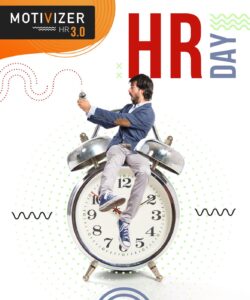Digitalization of HR is the key to unlocking the full potential of the organization.

Digitalization of life has become our daily reality. Shopping, meeting friends, entertainment, and culture are all within our reach without leaving our home. Political discussions have moved to social media, education at a prestigious foreign university is possible from anywhere in the world, and we can admire the sunset in New Zealand without leaving our bed in Poland.
This decade is the time of the biggest digital transformations of companies and, therefore, employees. In order to fully exploit their potential, companies must analyze their plans and strategies, and on the basis of this analysis, reorganize their processes to be able to respond to this challenge.
Digitalization of HR
The role of Human Resources departments will be particularly important in this process. As never before, the development of technology and new applications for existing ones will affect the relationship between employee and employer. Appropriately chosen tools can reduce the number of paper documents in HR by up to 90%, support the building of employee engagement, and automate benefit processes such as sports cards or medical packages (the advantages of digitalization in HR have been written about in global publications, in one of the entries, we present 10 books that every HR should know).
As the digitalization of HR continues, expectations of departments responsible for this sector will undergo changes. As tools using data collected by HR teams continue to develop, expectations for maximizing the benefits of decisions and directions indicated by these teams will grow. In the future, HR specialists may be more focused on data analysis and their effective use. The concept of corporate value is constantly changing and today human capital and employee know-how are as important as profit and profitability. That is why the impact of HR departments on building the future of businesses will grow every year. Digitalization and automation of HR processes will be crucial for the people responsible for human capital to devote maximum time, energy and attention to creative work, which will bring tangible benefits to the organization.
Wellbeing
With the release of time and energy, the person responsible for the Human Resources sector will be able to focus on the organization’s wellbeing (read more about why wellbeing in the organization is important). Although there is no exact and scientific definition of this concept, it is assumed that wellbeing is a holistic (mental and physical), subjective feeling in which we feel comfortable. In short, organizational wellbeing is a comprehensive approach to the employee as an individual and meeting their diverse needs. The main needs are related to our psychology, satisfying our ego, and providing ourselves with the mental comfort that financial security, for example, gives us.
Today, wellness programs in organizations focus on health issues, which is unfortunately a mistake from the outset. Health aspects may be one of the elements of such a program, but it should not play a key role in it.
Workplace and Out-of-Work Wellbeing
A conscious and responsible employer should provide their employees with solutions that will improve their workplace wellbeing but also educate them or provide them with wellbeing outside of work. If the employee feels well-being both at work and outside of it, that is, in the surroundings of their family and friends, then they have a chance to reach the optimal level of their involvement in the tasks assigned to them within the scope of their duties.
Good physical condition reduces absenteeism at work. A sense of self-realization and a good atmosphere positively affect the satisfaction indicators of employees, and providing real impact on the organization not only strengthens the employee’s connection with the organization but can also bring real value increases. The decision to implement wellbeing programs is one of the best investments that an organization can make in this decade. When the program provides an impact on all key areas, the organization has a real chance to maximize the potential of its employees while significantly reducing their turnover
Wellbeing programs and tools can also be enhanced with webinar solutions, supporting education or functionalities that improve team morale and introduce gamification elements such as Kudos, Recognition, Potluck (Zrzutka), or Total Reward Statement.
See Wellbeing possibilities in Motivizer
The implementation of a wellbeing program provides additional opportunities to create a positive image of the company, among customers, partners, investors, and potential future employees. The best specialists are looking for work places where their potential can be fully utilized.
A suitable partner for HR departments
Choosing the right Wellbeing tool provider will be one of the key factors for the success of digital transformation in this area. Attention should be paid to the flexibility of the tools and the expert knowledge of the provider. Tools created by the provider have greater capabilities to adapt to the needs of the organization than so-called box products, which have limited capabilities in this regard. Another facilitator, or even a must-have, is the ability to use a qualified electronic signature in HR departments.
Emphasizing digital competencies, new technologies, cloud computing, artificial intelligence, and the fastest implementation of these solutions in the company should be a priority for every entrepreneur. Without them, competing in the market in the next decade may not only be difficult, but even impossible.
Recent Posts:
- Capital24.tv Debate with Piotr Dubno – “Economy, Innovation, Investments. What Changes Await Us?
- The future of HR – what will be the key to organizational success?
- Are you keeping up with the idea of a modern workplace?
- Burnout, how can an employer help an employee?
- Digitalization of HR is key to unlocking the full potential of an organization

